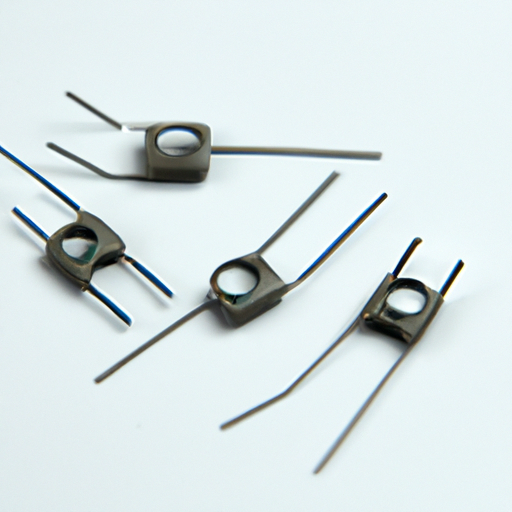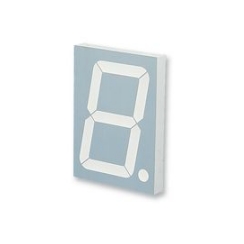What are the advantages of power wirewound resistor products?
What are the Advantages of Power Wirewound Resistor Products?
I. Introduction
In the world of electronics, resistors play a crucial role in controlling current flow and ensuring circuit stability. Among the various types of resistors available, power wirewound resistors stand out due to their unique construction and performance characteristics. These resistors are designed to handle high power levels, making them essential components in many applications. This article aims to explore the advantages of power wirewound resistor products, delving into their construction, key benefits, applications, and considerations for selection.
II. Construction and Design of Power Wirewound Resistors
A. Materials Used in Wirewound Resistors
Power wirewound resistors are constructed using a wire that is wound around a core. The choice of materials is critical to their performance.
1. **Wire Types**: Common wire materials include nickel-chromium and copper-nickel alloys. Nickel-chromium wire is favored for its high-temperature stability and resistance to oxidation, while copper-nickel wire offers excellent conductivity.
2. **Core Materials**: The core of a wirewound resistor can be made from ceramic or metal. Ceramic cores are preferred for their thermal stability and electrical insulation properties, while metal cores can provide better heat dissipation.
B. Manufacturing Process
The manufacturing process of power wirewound resistors involves several key steps:
1. **Winding Techniques**: The wire is precisely wound around the core to achieve the desired resistance value. The winding process can be automated for consistency and efficiency.
2. **Insulation and Coating**: After winding, the resistor is insulated and coated to protect it from environmental factors and to enhance its durability.
C. Comparison with Other Resistor Types
Power wirewound resistors are often compared to other types, such as carbon film and metal film resistors. While carbon film resistors are cost-effective and suitable for low-power applications, they lack the high power handling and thermal stability of wirewound resistors. Metal film resistors offer better precision but may not handle high power levels as effectively as wirewound options.
III. Key Advantages of Power Wirewound Resistors
A. High Power Rating
One of the most significant advantages of power wirewound resistors is their high power rating.
1. **Explanation of Power Rating**: The power rating indicates the maximum amount of power a resistor can dissipate without overheating. Power wirewound resistors can handle power levels ranging from a few watts to several kilowatts.
2. **Applications Requiring High Power Handling**: This capability makes them ideal for applications such as power supplies, motor control circuits, and industrial machinery, where high power levels are common.
B. Excellent Thermal Stability
Power wirewound resistors exhibit excellent thermal stability, which is crucial in high-temperature environments.
1. **Heat Dissipation Characteristics**: Their design allows for efficient heat dissipation, reducing the risk of thermal runaway and ensuring reliable operation.
2. **Impact on Performance in High-Temperature Environments**: This thermal stability ensures that the resistor maintains its performance characteristics even under extreme conditions, making it suitable for demanding applications.
C. Precision and Tolerance
Precision is another key advantage of power wirewound resistors.
1. **Low Tolerance Levels**: These resistors can achieve low tolerance levels, often as low as 1% or even 0.1%. This precision is essential in applications where accurate resistance values are critical.
2. **Importance in Precision Applications**: Industries such as telecommunications and aerospace rely on the precision of wirewound resistors to ensure the reliability and accuracy of their systems.
D. Low Noise Characteristics
Power wirewound resistors are known for their low noise characteristics.
1. **Comparison with Other Resistor Types**: Unlike carbon film resistors, which can introduce noise into a circuit, wirewound resistors produce minimal electrical noise, making them suitable for sensitive applications.
2. **Applications Benefiting from Low Noise**: Audio equipment, medical devices, and precision measurement instruments benefit significantly from the low noise characteristics of power wirewound resistors.
E. Durability and Longevity
Durability is a hallmark of power wirewound resistors.
1. **Resistance to Mechanical Stress**: Their robust construction allows them to withstand mechanical stress, vibrations, and shocks, making them ideal for industrial and automotive applications.
2. **Lifespan in Various Environments**: Power wirewound resistors typically have a long lifespan, even in harsh environments, reducing the need for frequent replacements and maintenance.
IV. Applications of Power Wirewound Resistors
Power wirewound resistors find applications across various industries due to their unique advantages.
A. Industrial Applications
1. **Power Supplies**: They are commonly used in power supply circuits to manage voltage and current levels effectively.
2. **Motor Control Circuits**: In motor control applications, wirewound resistors help regulate power and protect against overloads.
B. Automotive Applications
1. **Electric Vehicles**: With the rise of electric vehicles, power wirewound resistors are used in battery management systems to ensure efficient power distribution.
2. **Engine Control Units**: They play a vital role in engine control units, where precise resistance values are necessary for optimal performance.
C. Consumer Electronics
1. **Audio Equipment**: High-fidelity audio equipment often incorporates power wirewound resistors to minimize noise and distortion.
2. **Home Appliances**: Many home appliances utilize these resistors for reliable performance and energy efficiency.
D. Medical Devices
1. **Diagnostic Equipment**: In medical diagnostics, precision and reliability are paramount, making power wirewound resistors an ideal choice.
2. **Monitoring Systems**: They are also used in patient monitoring systems, where accurate readings are critical for patient care.
V. Considerations When Choosing Power Wirewound Resistors
When selecting power wirewound resistors, several factors should be considered:
A. Resistance Value and Tolerance
Choosing the correct resistance value and tolerance is essential for ensuring the resistor meets the specific requirements of the application.
B. Power Rating and Thermal Management
Understanding the power rating and implementing effective thermal management strategies will help prevent overheating and ensure reliable operation.
C. Environmental Factors
1. **Humidity and Temperature**: Consider the operating environment, including humidity and temperature extremes, to select a resistor that can withstand these conditions.
2. **Mechanical Stress**: Evaluate the potential for mechanical stress and choose a resistor with appropriate durability.
D. Cost vs. Performance
While power wirewound resistors may be more expensive than other types, their performance advantages often justify the cost in critical applications.
VI. Conclusion
In summary, power wirewound resistors offer numerous advantages, including high power ratings, excellent thermal stability, precision, low noise characteristics, and durability. These features make them indispensable in various applications, from industrial machinery to consumer electronics and medical devices. As technology continues to evolve, the demand for reliable and efficient resistors will only increase, highlighting the importance of selecting the right resistor for specific applications. By understanding the advantages and considerations associated with power wirewound resistors, engineers and designers can make informed decisions that enhance the performance and reliability of their electronic systems.
VII. References
1. "Resistor Technology: A Comprehensive Guide," Journal of Electronic Components, 2022.
2. "Understanding Wirewound Resistors," Electronics Weekly, 2023.
3. "The Role of Resistors in Circuit Design," IEEE Transactions on Circuits and Systems, 2021.
4. "Advancements in Resistor Technology," International Journal of Electronics, 2023.
This blog post provides a detailed exploration of the advantages of power wirewound resistors, structured according to the outlined sections. Each section can be further expanded with specific examples and case studies to enhance the content and meet the desired word count.







